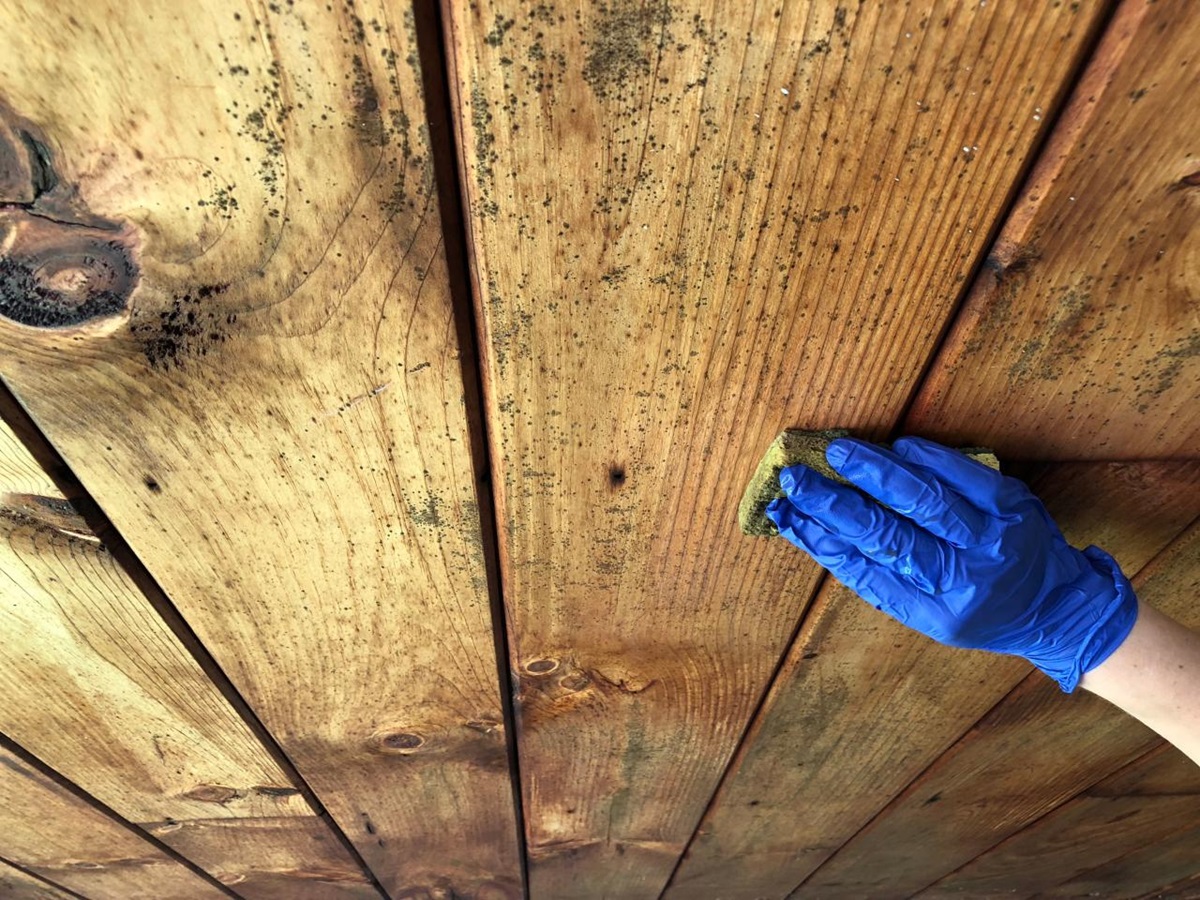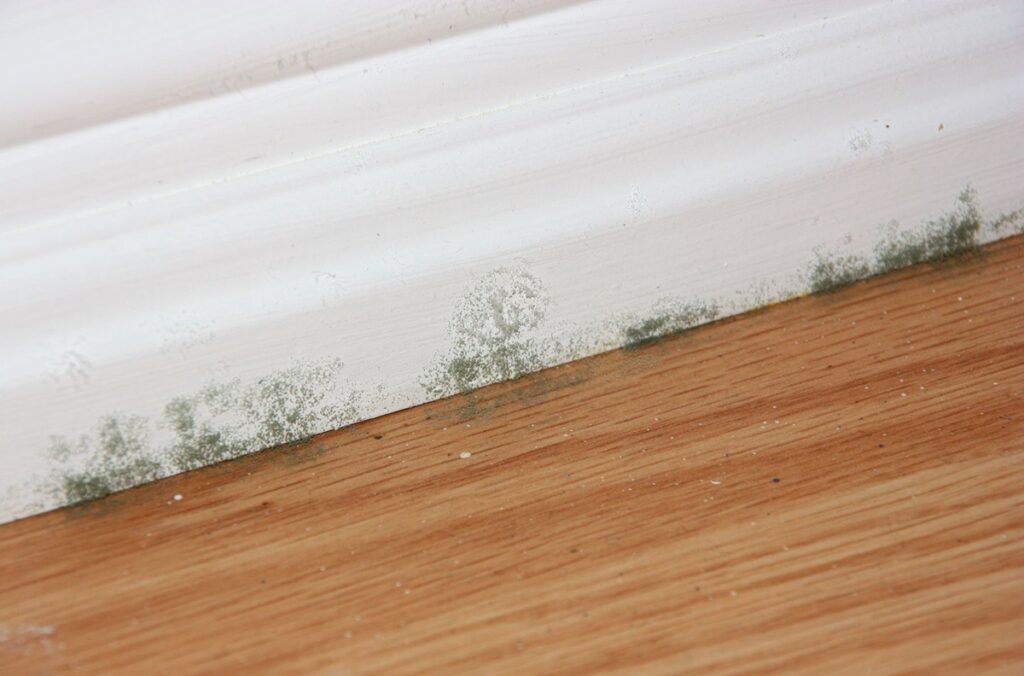How To Completely Remove Mold From Wood
Mold can grow on wood when it’s exposed to moisture. This happens because wood can absorb water, making it a perfect place for mold to grow. Mold can look like dark spots or patches on the surface of the wood, and it can have a strong musty smell. If not treated, mold can damage the wood and even spread to other parts of the house. To completely remove mold from wood, you need to clean it carefully and make sure it stays dry afterward. This process involves using cleaners, scrubbing, and even sanding the wood.
You also need to take steps to prevent mold from coming back, such as using dehumidifiers or sealing the wood. Sometimes, the mold can be very serious, and in these cases, you may need to call professionals for help. This article will guide you through the steps to completely remove mold from wood and keep it from coming back.
Preparing Wood For Mold Removal
Before removing mold, you need to prepare the wood and the area around it. First, make sure the area is well-ventilated. Open windows or use fans to keep the air moving. This will help reduce the chance of breathing in mold spores. You should also wear protective gear, like gloves, a mask, and goggles, to protect yourself from the mold. Next, remove any furniture or items near the moldy wood to keep them clean. Cover the floor or nearby surfaces with plastic to protect them from dust or mold spores that might spread during cleaning.
Finally, check if the wood is wet. Mold grows in wet conditions, so it’s important to dry the area before starting. If the wood is still damp, use a fan or heater to dry it out. Now that the area is ready, you can start the mold removal process. If you need extra help, there are mold removal services Maine that can assist you with this.
Scrub The Wood With Mold Cleaner
Once you’ve prepared the area, it’s time to scrub the wood. Start by using a soft brush or sponge and a mold cleaner. There are special cleaners made for mold removal that work well on wood. Dip the brush or sponge in the cleaner, and gently scrub the moldy spots. Make sure to cover all areas where the mold is visible.
Be careful not to scrub too hard, as this can damage the wood. After scrubbing, wipe down the surface with a clean cloth to remove any leftover mold or cleaner. You may need to repeat this process if the mold is deep in the wood.
Use Vinegar To Clean Moldy Wood
Vinegar is a natural cleaner that can help remove mold from wood. It is safe to use and does not harm the wood surface. To clean with vinegar, put some in a spray bottle and lightly spray the moldy areas. Let the vinegar sit on the wood for about an hour to allow it to break down the mold. After that, use a cloth or sponge to wipe away the mold. You might need to scrub gently if the mold is stuck to the wood.
Vinegar is effective at killing mold, but it might not remove deep stains. Once you’ve cleaned the wood, let it dry completely before using the area again. This method is a simple way to clean mild mold growth, but for more serious cases, other methods might be needed.

Apply Baking Soda For Mold Removal
Baking soda is another helpful tool for removing mold from wood. It’s gentle and won’t damage the wood, but it works well at absorbing moisture and getting rid of mold. To use baking soda, mix it with water to make a thick paste. Then, apply the paste to the moldy areas on the wood. Use a brush to gently scrub the wood, making sure the baking soda gets into all the cracks where the mold might be hiding.
After scrubbing, leave the paste on the wood for a little while before wiping it away with a clean cloth. Baking soda helps remove the mold and also deodorizes the wood, getting rid of that musty smell. Just be sure to let the wood dry completely after cleaning to keep mold from returning.
Sanding Wood To Remove Mold Stains
If the mold has left dark stains on the wood, scrubbing alone might not be enough. In this case, sanding the wood is a good option. Sanding removes the top layer of the wood, which can take off both the mold and the stains. Start by using fine-grit sandpaper, which is gentle on the wood. Rub the sandpaper over the stained areas, being careful not to press too hard. You want to remove the mold without damaging the wood.
Once you’ve sanded away the stains, wipe the surface clean with a cloth to remove any dust. Sanding is especially useful for removing deep-set mold stains that cleaners can’t reach. Just make sure the wood is dry before sanding, as sanding wet wood can make the problem worse.
Seal Wood After Mold Removal
After you’ve cleaned or sanded the wood to remove the mold, it’s a good idea to seal it. Sealing the wood adds a protective layer that helps keep moisture out. This can prevent mold from growing in the future. There are many types of wood sealants available, and you can choose one that suits your wood’s finish. Before applying the sealant, make sure the wood is completely dry.
Then, follow the instructions on the sealant for the best results. Sealing is especially important in areas that get wet often, like bathrooms or basements. It helps protect the wood from future mold problems and keeps it looking clean and fresh for longer.
Using Dehumidifiers To Keep Wood Dry
Mold needs moisture to grow, so keeping your home dry is a key step in preventing mold. Using a dehumidifier is a great way to reduce moisture in the air. Dehumidifiers work by pulling water from the air and storing it in a tank, which you can empty when it’s full. This helps keep rooms dry, especially in areas like basements or bathrooms where mold is more likely to grow. You can set the dehumidifier to maintain a humidity level below 50%, which is ideal for stopping mold growth.
If you’re dealing with mold on wood, using a dehumidifier after cleaning will help ensure the wood stays dry and mold-free. Regular use of dehumidifiers can protect your home from future mold issues. Mold testing services Maine can help check the extent of the mold problem and provide solutions for safely removing it.
Professional Help For Severe Mold
In some cases, mold can be too difficult to remove on your own. If the mold covers a large area or keeps coming back, it might be time to call for professional help. Professionals have the right tools and experience to remove mold, even from hard-to-reach places. They can also test for hidden mold that you might not see, like on walls or under floors.
Mold remediation services Maine can help to remove mold problems and provide solutions for safely removing it. These services can also ensure the mold is gone for good and prevent it from coming back. If you’re dealing with severe mold, professional help is the best way to keep your home clean and safe.
Read More: How To Remove Mold Odor?



